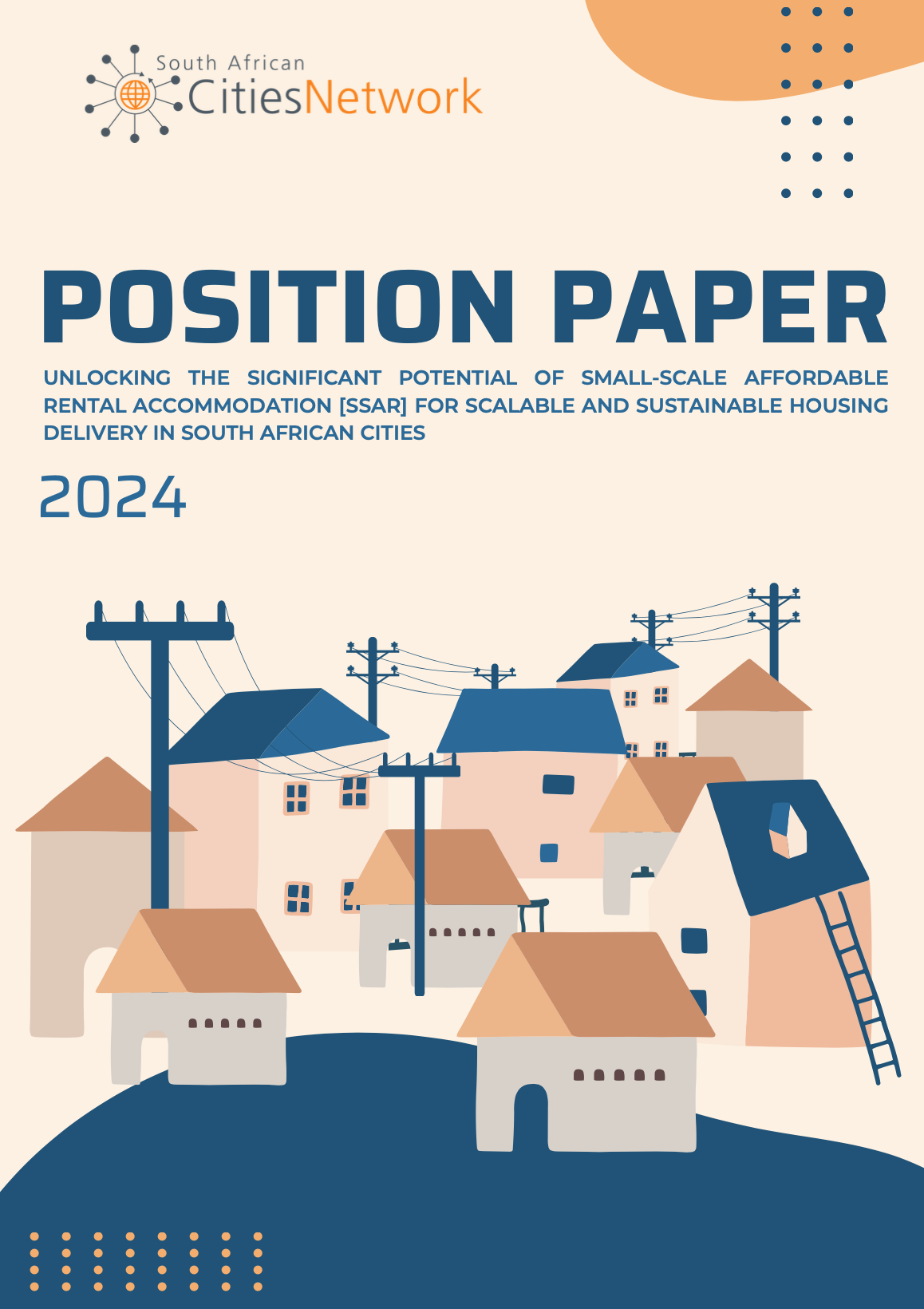SACN Position Paper: SSAR
Despite the implementation of what is arguably one of the largest national housing programmes on the continent, there remains a substantial unmet demand for housing. Current estimates indicate that 2,6 million households (approx. 12 million individuals) are in need of housing (Saal, 2022). This figure suggests a massive housing crisis in South Africa, primarily characterised by people living in informal settlements and backyard dwellings without adequate basic services, namely waste collection, clean water, reliable electricity and decent toilets. These conditions are exacerbated by inadequate social and economic infrastructure and environmental degradation. To address this, a scalable and sustainable approach – with municipalities at its core – is needed to address the housing backlog.
The roots of the housing crisis are two-fold and, in essence, reflect both a mismatch between supply and demand and the lack of scalable and sustainable solutions from the private and public sectors. With respect to the private sector, the data illustrates that the majority of units developed by this sector cater primarily for the upper-middle and higher (luxury) ends of the property market (Tshangana & Jubane, 2023). This leaves the public sector responsible for delivering housing for the bottom and lower-middle markets (Drummond, 2022). However, given a housing delivery rate of 125,000 units per year in 2018 (DoHS, 2020), the public sector cannot meet the demand for housing from these markets. Given the need to roll out as many units as possible within the parameters of the current housing models, public sector housing delivery has had the unintended negative outcome of reinforcing the ‘apartheid city’ as most housing projects are built on the peripheries of our cities where land values are lower. Furthermore, fiscal constraints, poor state capacity, and the poor coordination of activities across all government spheres hamper the delivery of scalability. Therefore, we must find the most scalable, sustainable and resilient delivery model, which rallies the knowledge and resources of all sectors of society, including the private sector.
Small-scale affordable rental (SSAR) has been identified as one such model. The term small-scale rental refers to a range of housing typologies, namely township micro-developments and small-scale, informal rental accommodation, including backyard rental housing. Civil society organisations, academics, with the support of national government departments such as the National Treasury and development partners, and several municipalities have highlighted SSAR as the sub-sector that holds significant potential for not just scalable and sustainable delivery of housing but also for driving local economic development (Charman, 2023) if support is given to emerging small and micro developers who provide vital affordable rental accommodation. The recognition of the pivotal role this phenomenon, which is largely observed in townships and in the backyards of RDP/BNG developments, can play in addressing the housing crisis has culminated in a national symposium held in May 2023, that called for action to support the growth, improvement and regularisation of the SSAR sub-sector (Turok, 2022). This paper builds on this call and sets out a position for cities in relation to SSAR.
SACN’s position is informed by knowledge co-created with cities, particularly through the Built Environment Integration Task Team (BEITT), a community of built environment practitioners that seeks to collectively deal with practical issues around spatial transformation from city practitioners’ perspectives and lived experiences. Thus, our insights and proposals are embedded in the institutional reality of what it means to drive spatial transformation in South African cities.

